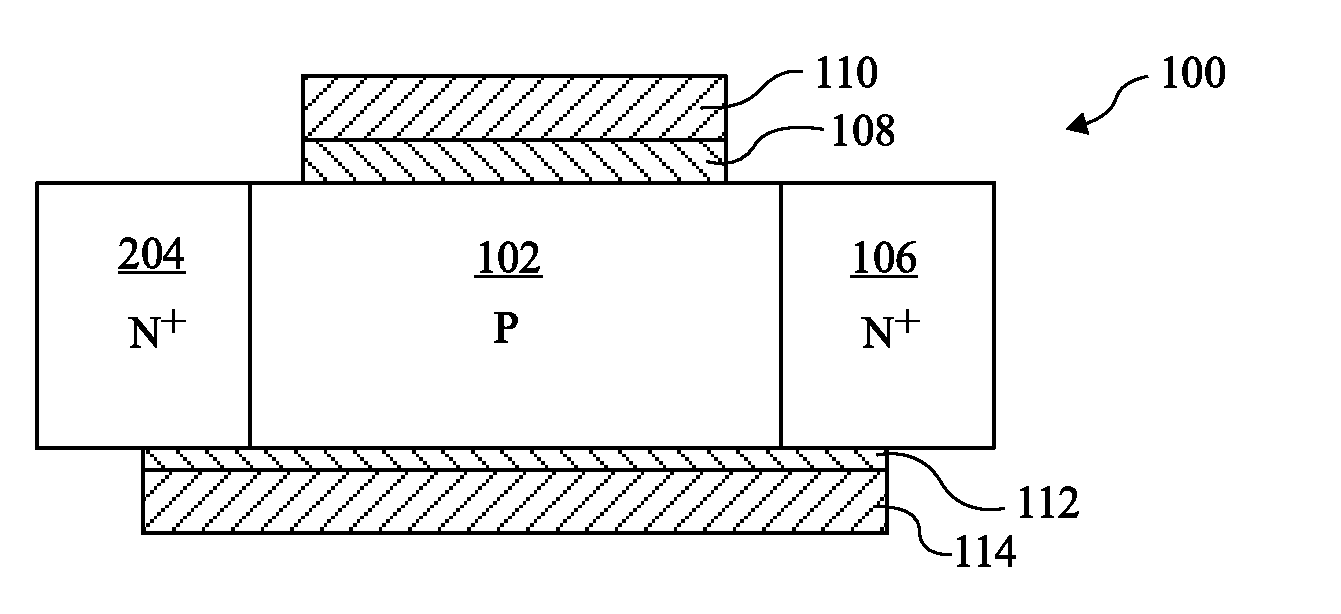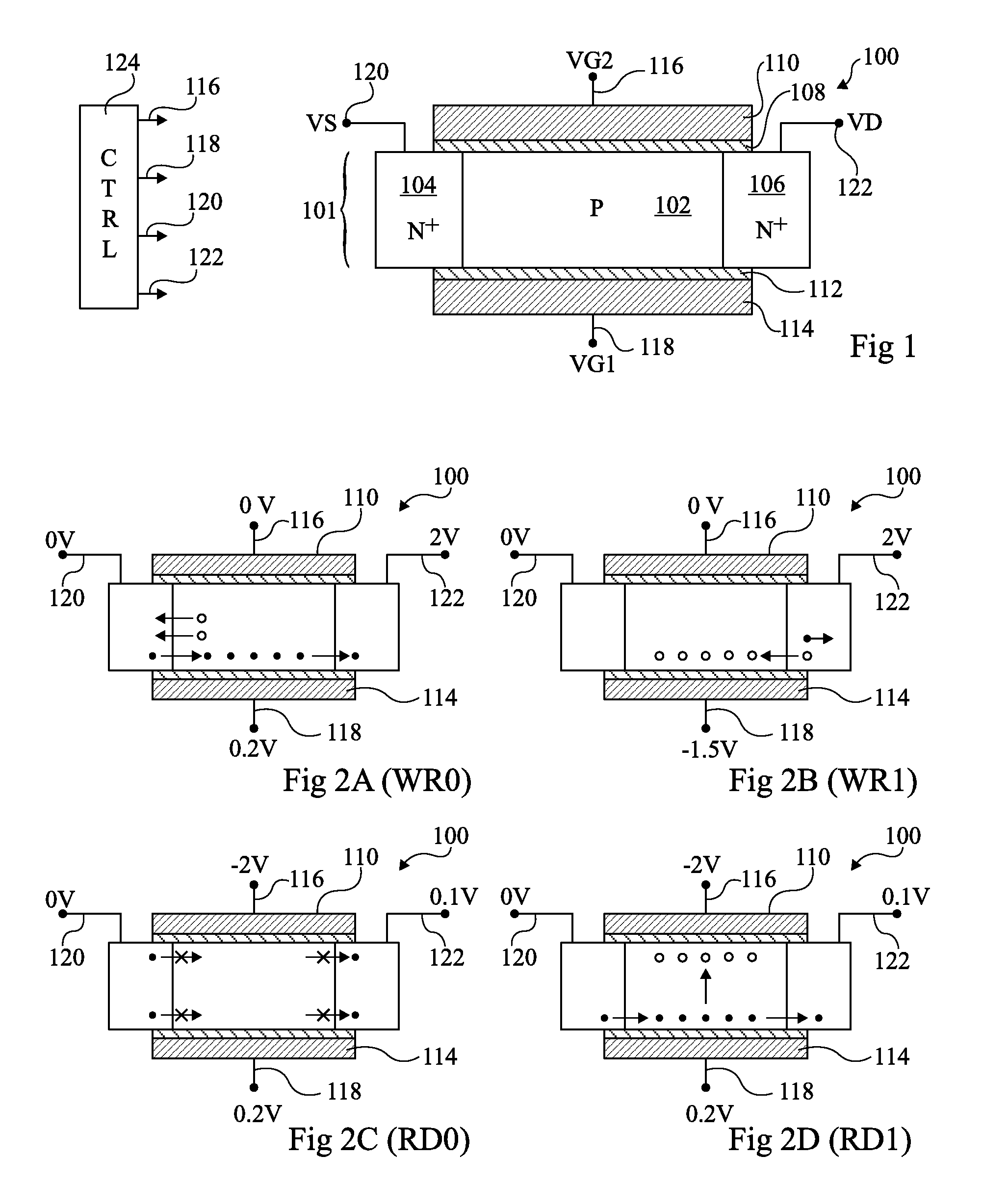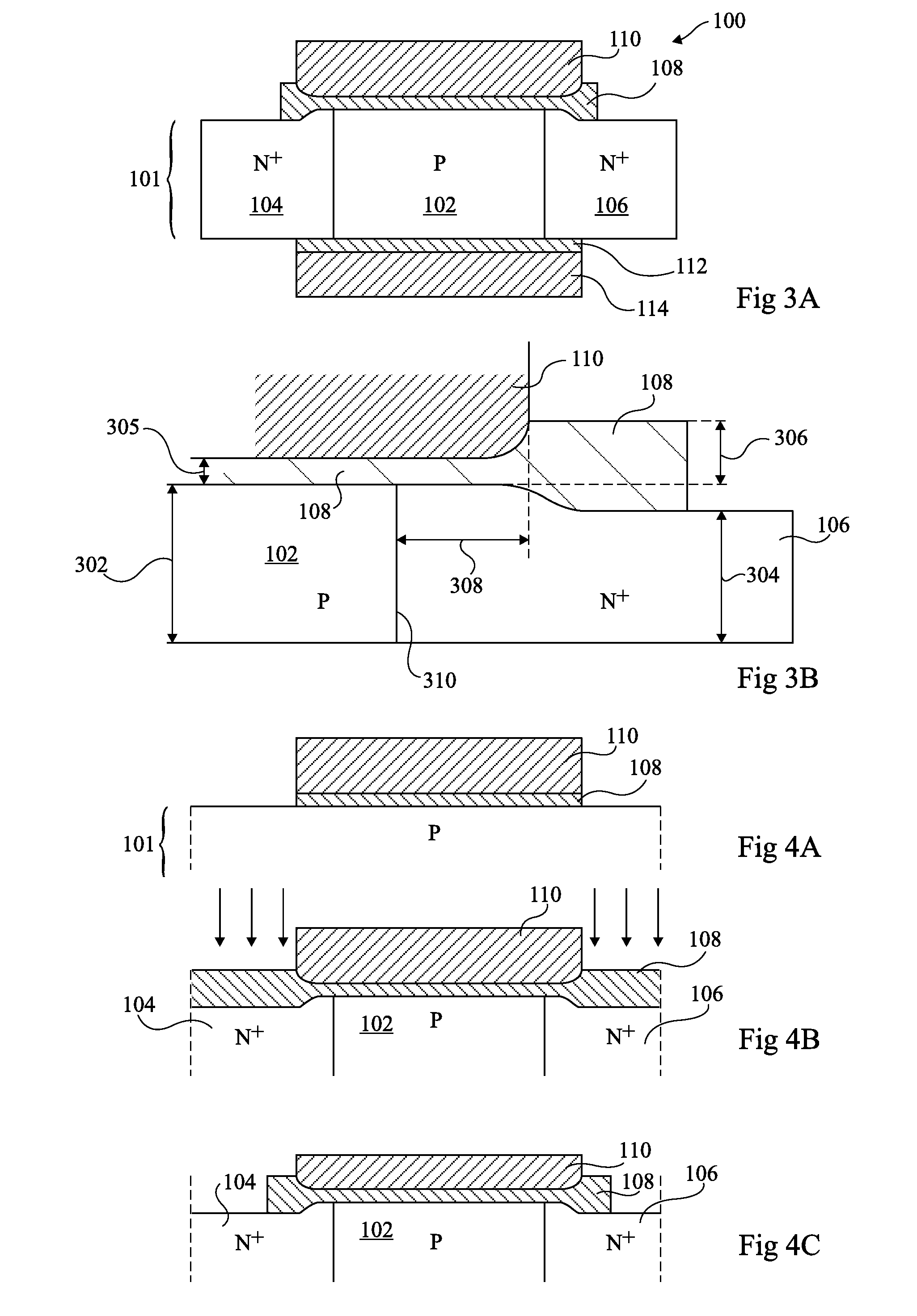Double-gate floating-body memory device
a floating-body memory and double-gate technology, applied in the field of memory devices, can solve the problems of insufficient supply voltage requirements, difficulty in reducing the overall size of the memory or increasing the capacity of the memory, and difficulty in reducing the size of each memory cell, so as to achieve the effect of increasing the spacing
- Summary
- Abstract
- Description
- Claims
- Application Information
AI Technical Summary
Benefits of technology
Problems solved by technology
Method used
Image
Examples
Embodiment Construction
[0029]FIG. 1 schematically illustrates in cross-section a memory device 100, comprising a thin silicon film 101 sandwiched between two opposing gates. The thin silicon film 101 comprises a P-type floating body 102 positioned between N-type source and drain regions 104 and 106 respectively.
[0030]The top gate in FIG. 1 is formed on the top side of the thin silicon film 101 and comprises an insulating layer 108 separating the body 102 from a gate electrode 110, which is for example formed of polysilicon or another conducting material. The bottom gate in FIG. 1 is formed on the opposite side of the thin silicon film 101 and comprises an insulating layer 112 separating the body from a gate electrode 114.
[0031]Gate contacts 116 and 118 make electrical contact with the gate electrodes 110 and 114 respectively. A source contact 120 makes contact with the source region 104, while a drain contact 122 makes contact with the drain region 106.
[0032]The thin silicon film 101 for example has a thi...
PUM
 Login to View More
Login to View More Abstract
Description
Claims
Application Information
 Login to View More
Login to View More - R&D
- Intellectual Property
- Life Sciences
- Materials
- Tech Scout
- Unparalleled Data Quality
- Higher Quality Content
- 60% Fewer Hallucinations
Browse by: Latest US Patents, China's latest patents, Technical Efficacy Thesaurus, Application Domain, Technology Topic, Popular Technical Reports.
© 2025 PatSnap. All rights reserved.Legal|Privacy policy|Modern Slavery Act Transparency Statement|Sitemap|About US| Contact US: help@patsnap.com



